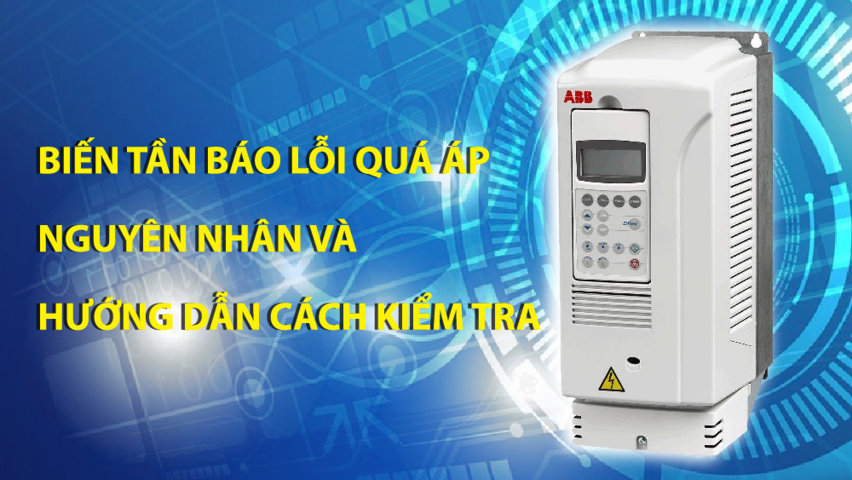The inverter shows an overvoltage error, which is a common error that most users encounter. This is one of the most common and often easy to encounter errors. Therefore, VPIC will answer questions about the cause and guide you on how to check. We invite you to take a look at this article.

1 – What is an inverter overvoltage fault?
Among the faults of the inverter, the overvoltage fault is quite common and often encountered on the inverter. Overvoltage error in English is called Over Voltge (OV), so with common inverter lines, it will be reported as OV or OV1-2. As for the inverters made by some manufacturers, the inverters with overvoltage error are recorded as E7 (E here is error) or F4 (F stands for Fault).
One thing to keep in mind with the overvoltage fault is that it only happens instantaneously at a certain time. Therefore you can only monitor the DC bus voltage stored on the inverter at the time of failure, it is not possible to measure the overvoltage at this time.
When the overvoltage fault occurs continuously, it is necessary to find the cause and fix it immediately, it is not recommended to reset and run many times because it may cause the inverter to explode or be severely damaged.
2 – Causes and directions to fix the inverter overvoltage error
Need to check carefully to determine the cause, usually this error will be handled in 2 directions as follows:
2.1 – Overvoltage error due to too high input voltage
The common cause of the inverter’s overvoltage is the voltage on the DC bus being too high, beyond the allowable threshold of the inverter. So what causes high voltage on DC bus? The most common cause is because the input voltage source is too high. Then measure the input voltage or check the DC bus parameter at fault (you can check this parameter in the monitor parameter set of the inverter).
Input overvoltage of the inverter is usually caused by a problem with the substation that increases the voltage at the inverter power supply. Or it could also be due to a problem with the power supply of the capacitor.
Once you have verified that the input voltage is normal, refer to the second cause below.
2.2 – Overvoltage error due to high inertia load
The inverter overvoltage error can also be caused by the inverter’s load in the form of a large inertia load, which can cause the motor to become a generator that generates electricity back to DC causing OV condition. You can recognize this error because it only occurs when the drive starts or stops.
For this reason, there are 2 ways to fix it:
+ The first is to set the inverter’s acceleration and deceleration time to long
+ The second is to add a discharge resistor to the inverter.
When your inverter already has a discharge resistor and still shows an OV error, you should check to see if the discharge feature is enabled on the inverter. As for older inverters without a discharger, you just need to buy a separate discharger and add it to the inverter before attaching the discharge resistor.
The condition of the inverter being overcharged can also be caused by a faulty internal or external discharger, unable to discharge excess electricity. Then you should check this event link again if the inverter still reports OV error continuously.
In addition to the above reasons, the inverter has an OV error, it may also be caused by a damaged voltage sensor, from which the result returned to the processing board is wrong, causing the inverter to report an overvoltage error.

 Tiếng Việt
Tiếng Việt
What is an E11 error code?
Hi, Please contact us
Email : sales.vpic@gmail.com
Thanks you